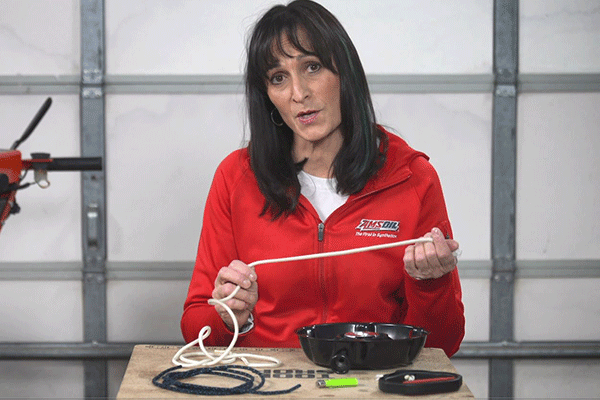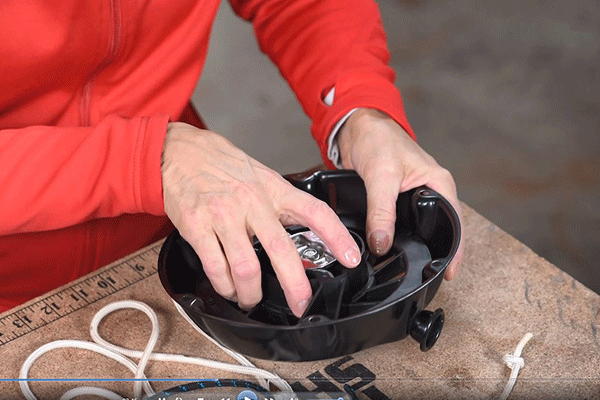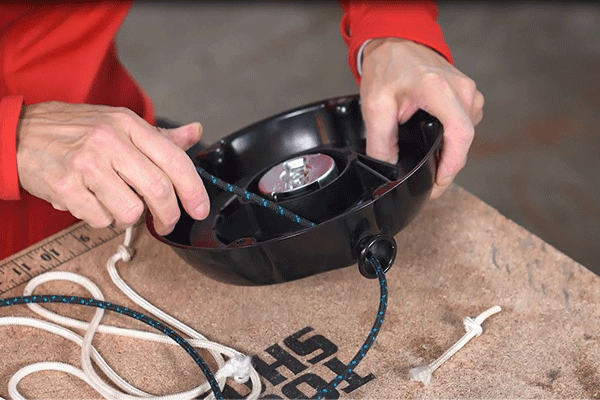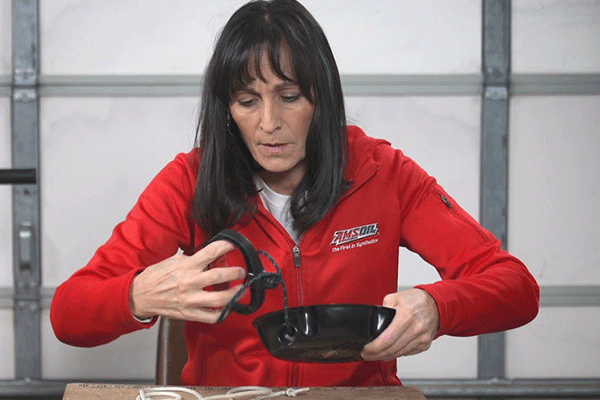Fixing a Lawnmower Pull Cord
Few things are more frustrating than going to cut the grass or clear your driveway of snow and ending up with the starter cord in your hand. Eventually, it happens to everyone. When it does, check out this video on how to fix a lawnmower pull cord.

Steps for fixing a lawnmower pull cord
1) Remove the recoil
First, remove the recoil from the engine. Most are held in place with three to five bolts. After removing the recoil, remove the broken cord.
2) Measure and cut the old cord
Next, measure the old pull cord. Add about four inches to the overall length to account for the knots you need to tie on either end. Add additional length as needed if the cord broke farther from the handle.
Most of the time, however, the cord will break at the handle. In this case, you can simply reuse the existing cord. However, consider upgrading to a high-quality nylon cord for added durability.
Cut the rope to the appropriate length. Then, use a lighter to melt the ends. This seals the fibers and makes it much easier to thread the cord.
3) Tie on the handle
Remove the old lawnmower pull cord from the handle, feed through the new cord and tie a simple knot. Make sure the knot is nice and tight. Pull it back through the handle to help tighten the knot.
4) Load the recoil spring
The next thing you’re going to do is load the recoil spring. Turn the recoil in the direction that causes the engagement lugs to protrude. The engagement lugs connect the recoil to the engine and spin the flywheel.
Continue turning the recoil, making sure to apply enough pressure to prevent the spring from releasing and bloodying your knuckles.
Once you feel full tension on the spring, locate the hole on the pulley through which the starter cord threads. Align it with the outside hole on the recoil body.
5) Thread the new pull cord
With the two holes aligned, thread the new cord through about 12 inches. Make sure the cord isn’t tangled and then slowly release pressure on the recoil, letting it wind the cord for you until the handle is sitting against the recoil.
Next, tie a knot on the end of the cord. Pull the handle until the knot you just tied locks into place in the recoil pulley. Slowly let the cord retract.
6) Reattach the recoil to the engine
Finally, attach the recoil to the engine and you’re done. You just fixed your lawnmower pull cord.
What if the cord is too long?
You don’t have to go back and do everything over. Mark with a Sharpie where the cord meets the recoil. That’s where the handle should be.
Pull the cord out, keeping tension on the recoil. Make a loose knot near the recoil.
This provides slack to make a new knot where you made your mark earlier. Tie a good, tight knot and pull the cord back out, again keeping some pressure on the recoil so it doesn’t snap back. Untie the temporary knot you made earlier.
That’s how you fix a lawnmower pull cord. You’re ready to get back to cutting the lawn or blowing snow.










